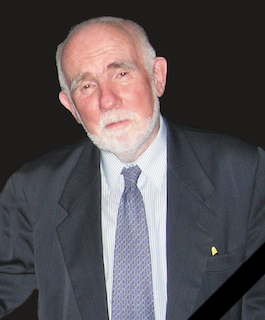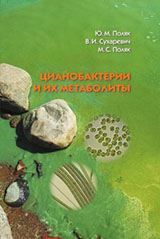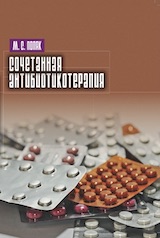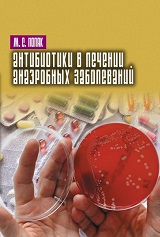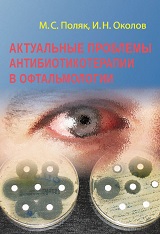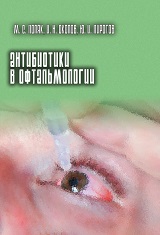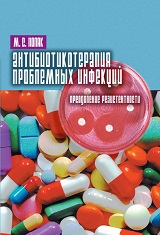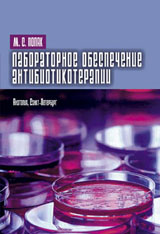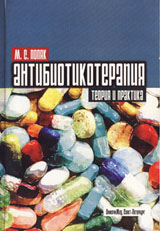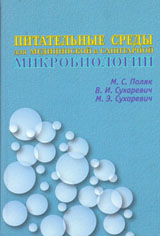Antibiotic therapy. Theory and Practice
M.S.Polyak. - St. Petersburg: InformMed, 2010. - 424 pp.
- Chapter 1. Antibiotics. Terminology. Fundamentals of rational antibiotic therapy.
- Chapter 2. Pathogen's sensitivity to antimicrobial agents: the keystone of antibiotic therapy.
- 2.1. Sensitivity and resistance of pathogens. Clinical sense of these concepts.
- 2.2. Antimicrobial spectrum of antibiotics and other chemotherapeutic compounds.
- 2.3. Postantibiotic effect of antibiotics.
- 2.4. Sensitivity paradoxes. Why antibiotics can be effective when the microflora is resistant and not effective when it is sensitive.
- Chapter 3. Clinical importance of pharmacokinetics of antimicrobial agents.
- 3.1. Concentration of antimicrobial agents in blood.
- 3.2. Concentration of antimicrobial agents in body tissue. Histohematogenous barrier penetration.
- 3.2.1. Penetration into lungs tissue and respiratory tract.
- 3.2.2. Concentration in liver.
- 3.2.3. Concentration in kidney tissues.
- 3.2.4. Penetration into cerebrospinal fluid and axis.
- 3.2.5. Concentration in bony tissue.
- 3.2.6. Concentration in muscles.
- 3.2.7. Penetration into cardiac muscle.
- 3.2.8. Penetration into soft tissues.
- 3.2.9. Concentration in prostata gland and seminal fluid.
- 3.3. The pharmacokinetics of antimicrobial preparations in disease.
- 3.3.1. The pharmacokinetics in kidney pathology.
- 3.3.2. The pharmacokinetics in liver pathology
- 3.3.3. Antimicrobial agents penetration into cerebrospinal fluid and axis during central nervous system deseases.
- 3.3.4. Effect of other pathoses on the pharmacokinetics of antimicrobial preparations.
- Chapter 4. Damaging action of antimicrobial agents: clinical implications, diagnosis, prevention.
- 4.1. Three types of antimicrobial agent's damaging action on human body.
- 4.2. Direct toxic effect of antimicrobial agents.
- 4.2.1. Nephrotoxic action.
- 4.2.2. Hepatotoxic action.
- 4.2.3. Ototoxic action.
- 4.2.4. Neurotoxic action.
- 4.2.5. Toxic action on blood and hematopoietic system.
- Chapter 5. Combined use of several antimicrobial agents.
- Chapter 6. Errors and oversights in antimicrobial therapy.
- Chapter 7. Antibiotic therapy: problems and prospects.
- 7.1. New antimicrobial agents. The return of the old ones.
- 7.2. Prospects of antimicrobial therapy laboratory support. Principle of sufficiency.
